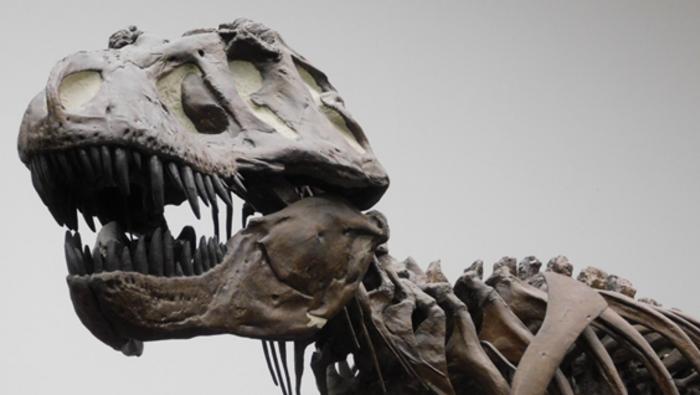
An international team of scientists released a sort of brain cell audit that counters last year’s controversial claims of high Tyrannosaurus Rex intelligence. A 2023 Journal of Comparative Neurology report calculated that the dinosaur’s brain held over 3 billion neurons. A new paper in The Anatomical Record calls that an over-estimation.
That 2023 study put T. rex’s intelligence potentially on par with monkeys and suggested the dinosaurs could perhaps use tools and teach social behaviors to their offspring. These intelligence estimates were largely based on neuronal count and conducted by extrapolating the number of neurons that fit into other creatures with similarly shaped skulls — for example, the ostrich.
Controversial T. rex Intelligence
Those estimates were considered controversial then. Amy Balanoff, a paleontologist at Johns Hopkins University not involved in the study last year told Discover that she admired the attempt, “but the author uses too broad of a brushstroke.”
Ashley Morhardt, a paleoneurologist at Washington University School of Medicine in St. Louis, agreed, adding that there is no clear way to verify the claims, because soft tissues like brain cells don’t fossilize.
The new study focuses that criticism both farther and more specifically. First, it questions whether one can accurately “scale up” neuron count from ostrich to T. Rex. Then it challenges some assumptions the earlier paper made about the size of the dino’s brain. Finally, it asks whether a more complex way of calculating dinosaur intelligence might be considered.
Read More: The Daunting Task of Measuring Dinosaur Intelligence
Covering all Bases
The team found that the earlier study overestimated brain size, which, of course, affects the potential number of neurons. They also argued that neuron count alone does not provide a reliable guide to intelligence.
Researchers based their conclusion on decades of analysis from paleontologists and biologists who study dinosaur brain size and anatomy. They reconsidered brain size by examining mineral infillings of the brain cavity, called endocasts. Finally, they took another look at the shape and size of the brain cavities themselves.
This multi-tiered approach should be more reliable than the 2023 study, which was based largely on neuronal estimates. Researchers must consider skeletal anatomy, bone histology, the behavior of living relatives, and trace fossils, the new paper argues.
“Determining the intelligence of dinosaurs and other extinct animals is best done using many lines of evidence ranging from gross anatomy to fossil footprints instead of relying on neuron number estimates alone,” the University of Bristol’s Hady George, one of the new paper’s authors, said in a statement.
Another of the new paper’s authors suggests that dinosaurs need not have monkey-like intelligence to be interesting or relevant.
“They were more like smart giant crocodiles, and that’s just as fascinating,” Darren Nash, of the University of Southampton, said in a statement.
Read More: Do We Know If Dinosaurs Were Smart Enough to Hunt In Packs?
Article Sources
Our writers at Discovermagazine.com use peer-reviewed studies and high-quality sources for our articles, and our editors review for scientific accuracy and editorial standards. Review the sources used below for this article:

